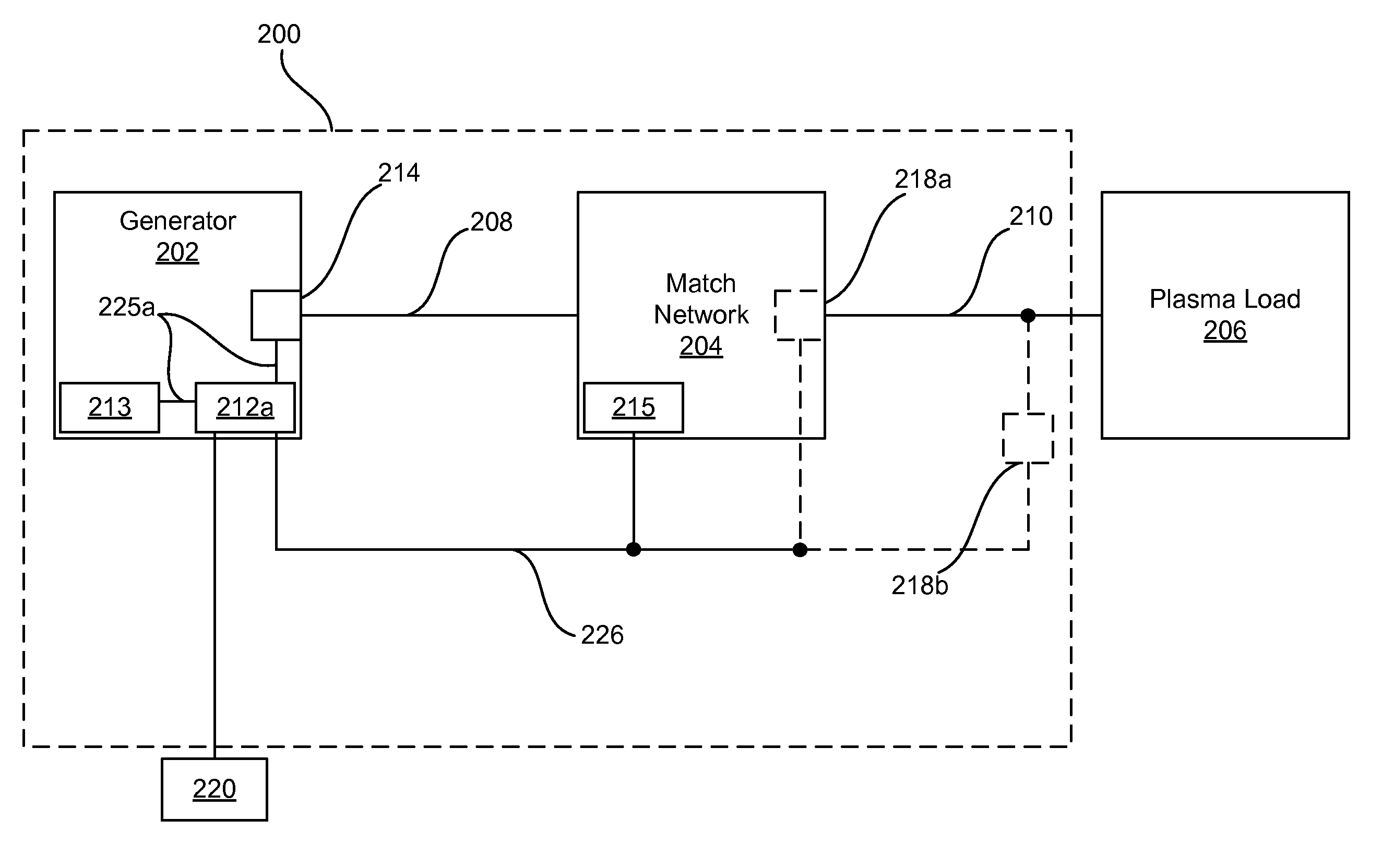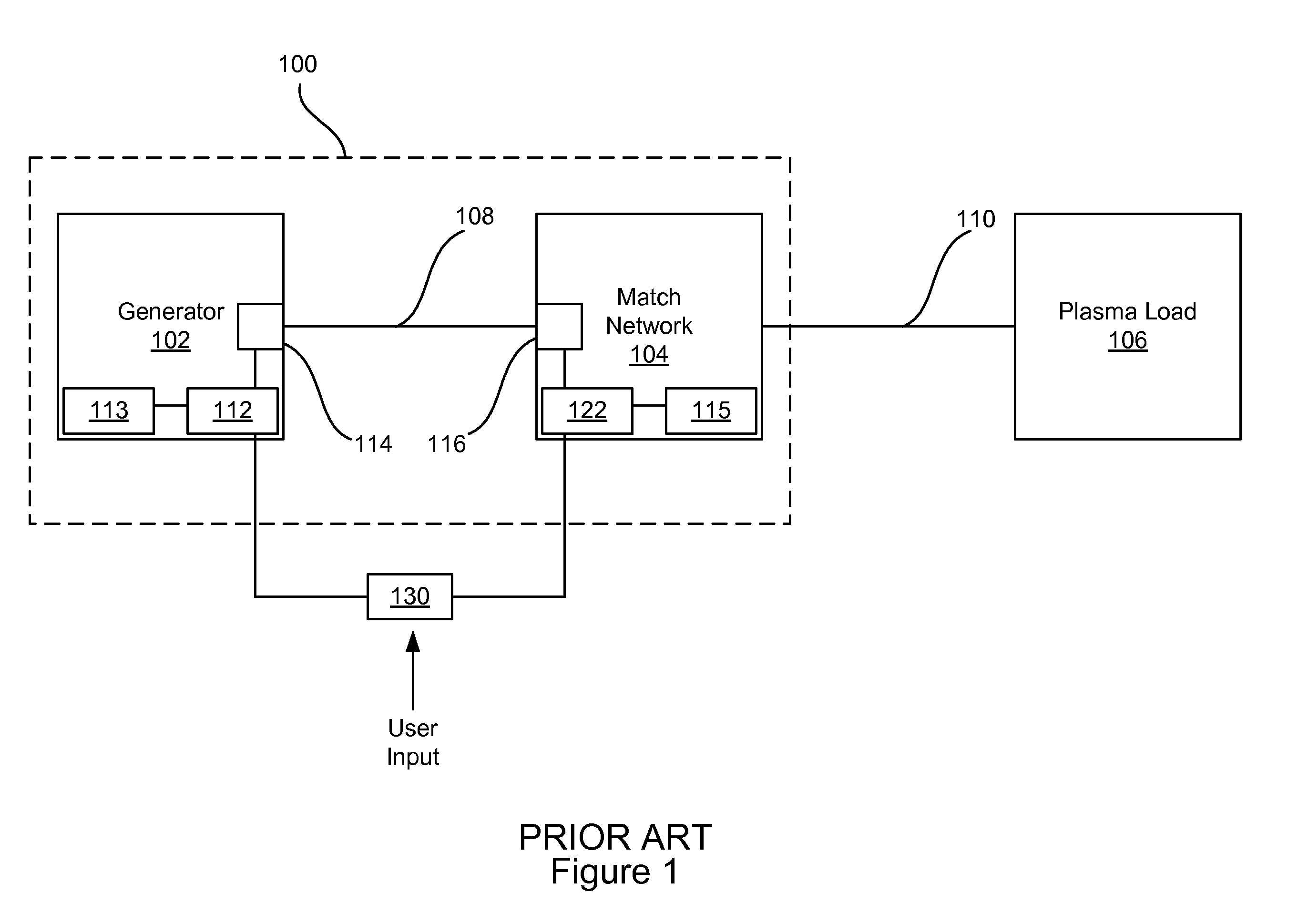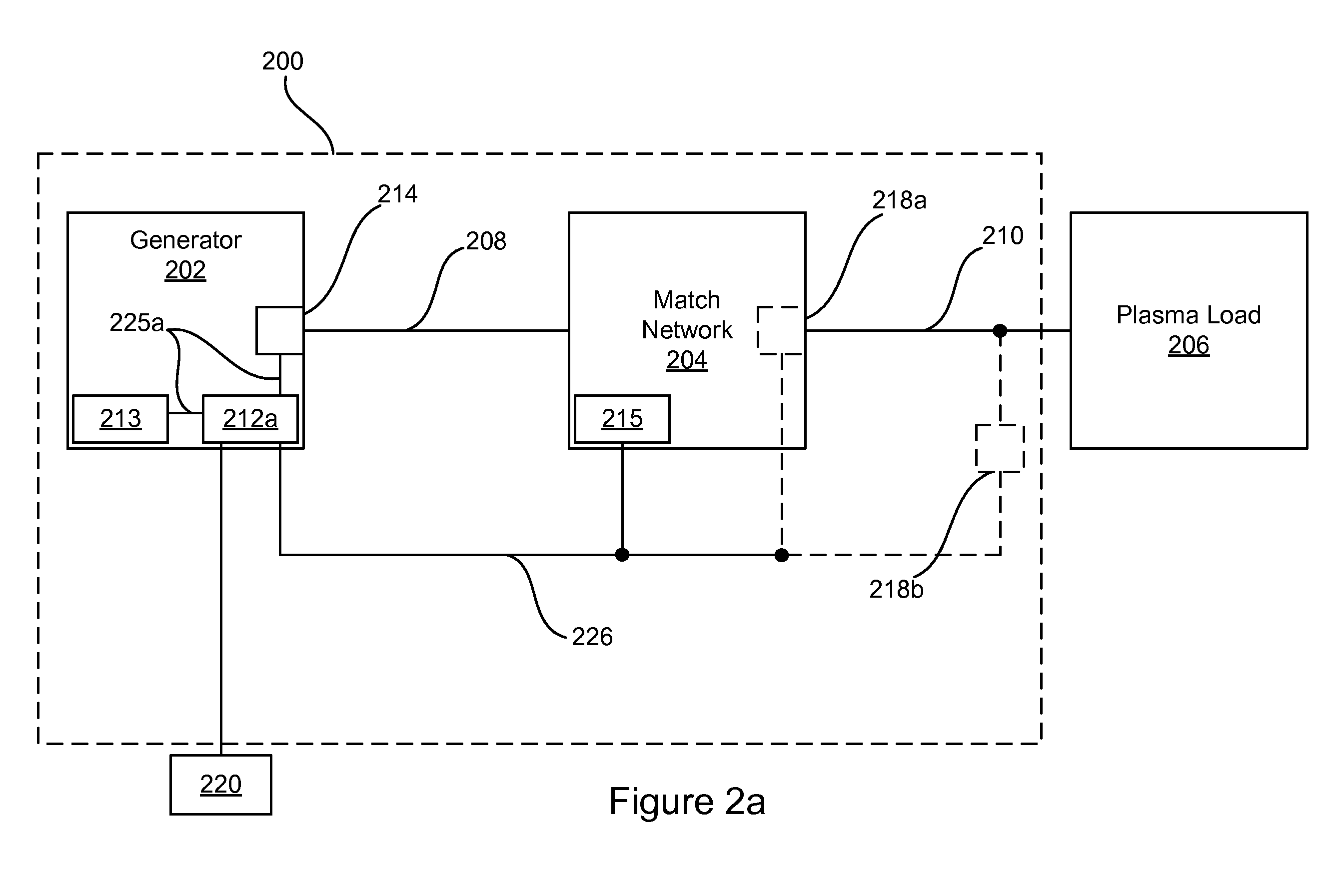System level power delivery to a plasma processing load
- Summary
- Abstract
- Description
- Claims
- Application Information
AI Technical Summary
Benefits of technology
Problems solved by technology
Method used
Image
Examples
Embodiment Construction
[0025]This disclosure overcomes the challenges faced in the prior art by recognizing that traditional and even cutting edge systems are still limited by their autonomous design—in particular, a generator and match network independently operated. This disclosure describes systems, methods, and apparatuses for integrating communication, measurement, and control amongst components of a power delivery system (also known as a power generation and delivery system). Some advantages of this approach include the ability to provide accurate power regulation over a wide dynamic range, faster power stabilization during transients, and decreased reflected power, for both pulsed and continuous wave (CW) power.
[0026]FIGS. 2a-2c illustrate three embodiments of a power delivery system 200. The power delivery system 200 provides power to a plasma load 206, where a match network 204 minimizes reflected power. A generator 202 power output is provided to the match network 204 via a first transmission me...
PUM
 Login to View More
Login to View More Abstract
Description
Claims
Application Information
 Login to View More
Login to View More - R&D
- Intellectual Property
- Life Sciences
- Materials
- Tech Scout
- Unparalleled Data Quality
- Higher Quality Content
- 60% Fewer Hallucinations
Browse by: Latest US Patents, China's latest patents, Technical Efficacy Thesaurus, Application Domain, Technology Topic, Popular Technical Reports.
© 2025 PatSnap. All rights reserved.Legal|Privacy policy|Modern Slavery Act Transparency Statement|Sitemap|About US| Contact US: help@patsnap.com



